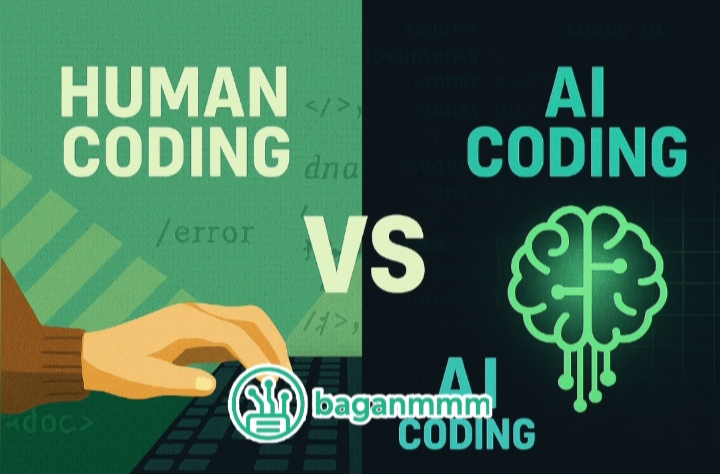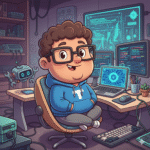This time, I wrote this blog to address a question: As AI coding becomes more powerful, will developers lose opportunities?

No matter how good AI coding becomes, it cannot manage a project like a human can, because AI is not human. The improvement of AI coding is the result of the efforts of AI companies and the precise prompts given by developers. While AI may replace developers in certain coding tasks, areas such as decision‑making, critical thinking, process management, and gathering additional resources can only be handled by developers.
This is the current situation. At present, AI’s capability is at the level of the best assistant. That’s why some people think opportunities for juniors may disappear. In reality, juniors can use AI effectively and build other essential skills.
For example, by learning project management, debugging, issue fixing, and security analysis, juniors can reach the senior level in a shorter time. Therefore, the more powerful AI becomes, the more opportunities there are for developers. Turn obstacles into opportunities.
In this blog, I’ve discussed the influence of human coding and AI coding on projects, and how collaboration between the two works. Both juniors and seniors should understand these aspects.
Human Coding: Strengths and Struggles
Strengths of Human Coders
1. Creative Problem Solving
Human developers excel at solving open-ended, ambiguous problems — especially when requirements shift or constraints are unclear. Unlike AI, which relies on pattern recognition, humans can:
- Invent new algorithms from scratch
- Combine unrelated concepts to form novel solutions
- Adapt to edge cases and exceptions that weren’t anticipated
As noted by MIT’s Armando Solar-Lezama, “AI hasn’t reached the point where you can collaborate with it the way you can with a human programmer”.
2. Contextual Awareness
Humans understand the “why” behind the code — business goals, user behavior, and long-term impact. This allows them to:
- Prioritize features based on user needs
- Make trade-offs between performance, usability, and maintainability
- Spot misalignments between technical output and strategic intent
This is especially critical in domains like healthcare, fintech, and education, where logic must reflect real-world workflows.
3. Ethical and Social Judgment
Human coders can evaluate the ethical implications of their work:
- Should this feature be built at all?
- Could it harm users or reinforce bias?
- Is the data being handled responsibly?
AI lacks moral reasoning and may replicate harmful patterns from its training data. Developers are the gatekeepers of responsible tech.
4. Team Collaboration and Communication
Human coders thrive in collaborative environments:
- Pair programming, code reviews, and agile standups
- Mentoring junior developers and onboarding new hires
- Navigating interpersonal dynamics and cross-functional teams
These soft skills are irreplaceable and form the backbone of successful engineering cultures.
Struggles Faced by Human Coders
1. Cognitive Fatigue and Burnout
Manual coding, debugging, and context switching can lead to:
- Mental exhaustion
- Reduced productivity
- Increased error rates
AI tools help alleviate this by automating repetitive tasks, but humans still bear the cognitive load of decision-making and oversight.
2. Knowledge Gaps and Learning Curves
Even experienced developers face challenges:
- Keeping up with new frameworks, languages, and APIs
- Understanding legacy systems or undocumented code
- Navigating unfamiliar domains (e.g., quantum computing, blockchain)
AI can assist with syntax and documentation, but deep understanding still requires human effort.
3. Bias and Assumptions
Human intuition, while powerful, can lead to:
- Overconfidence in flawed logic
- Ignoring edge cases or accessibility needs
- Reinforcing cultural or technical biases
This is why diverse teams and peer reviews are essential.
4. Time Constraints and Manual Overhead
Developers often spend hours on:
- Writing boilerplate code
- Refactoring for performance
- Manually testing edge cases
AI tools like Copilot and Tabnine reduce this burden, but integration and validation still require human judgment.
AI Coding: Capabilities and Constraints
Capabilities of AI Coding
1. Autonomous Code Generation
Modern AI tools (GitHub Copilot, Gemini CLI, Amazon CodeWhisperer, etc.) can generate complete components, functions, and even full‑stack applications from natural language prompts. For example, when a developer gives a prompt like “Build a login system with JWT authentication”, the AI can produce production‑ready code.
- Supports multiple programming languages (Python, JavaScript, Go, Rust, PHP, etc.)
- Instantly handles boilerplate, routing, and serialization
- Reduces time spent on repetitive setup tasks
- Can also generate project structures with security and stability features according to the developer’s intent
2. Contextual Suggestions
AI models integrated into IDEs (e.g., VS Code, IntelliJ) provide real‑time, context‑aware suggestions. They analyze surrounding code and recommend completions, refactors, or fixes aligned with the developer’s goals.
- Inline autocomplete for complex logic
- Refactoring suggestions based on best practices
- Code comments and documentation generation
3. Automated Testing and Debugging
AI can generate unit tests, integration tests, and simulate edge cases. It identifies bugs and vulnerabilities by analyzing code patterns.
- Tools like CodiumAI and Testim automate test creation
- AI flags logic flaws, syntax errors, and security risks
- Debugging loops are shortened with AI‑generated fixes
- Provides suggestions and executes tasks precisely according to prompts
4. Integration into DevOps Workflows
AI is now embedded in CI/CD pipelines, automating deployment, rollback, and performance monitoring. It helps teams maintain velocity without sacrificing quality.
- Predicts infrastructure needs and scaling triggers
- Monitors logs and metrics for anomalies
- Suggests rollback strategies during failed deployments
- Enhances the overall development setup
Constraints of AI Coding
1. Lack of True Understanding
AI does not truly “understand” code. It predicts based on statistical patterns. As a result, it can generate syntactically correct but logically flawed code.
- May produce incorrect results if prompts are vague
- Cannot anticipate long‑term architectural impacts
- Struggles with new or highly complex problems
2. Context Blindness
AI models rely heavily on the clarity of prompts. Without precise instructions, they may generate irrelevant or incorrect code.
- Cannot infer intent beyond code syntax
- Cannot adapt to new requirements without retraining
- May ignore edge cases or accessibility needs unless explicitly instructed
3. Debugging Loops and Iteration Fatigue
AI‑generated code often requires multiple revisions to function correctly. Developers may fall into “AI revision loops,” where fixing one issue introduces another.
- Because AI focuses only on the specific part it was asked to fix, it may overlook broader issues
- This can sometimes lead to wasted time
Real‑World Showdown: AtCoder 2025
At the 2025 AtCoder World Finals, OpenAI’s internal model outperformed many of the world’s top human programmers, solving algorithmic challenges with remarkable speed. However, in the final round, a former OpenAI engineer named Siho delivered a last‑minute solution and won, proving that human ingenuity still holds its ground.
In particular, today’s AI systems are still heavily dependent on prompts and datasets, so they are not yet fully prepared for highly complex or entirely new problems. However, for existing and well‑defined problems, AI can often solve them faster and more efficiently than humans.
The Future: Collaboration Over Competition
Rather than replacing developers, AI is becoming a coding partner automating the tedious, enhancing the creative, and expanding access to software development. The most successful teams in 2025 are those that:
- Use AI for boilerplate, testing, and optimization
- Rely on humans for architecture, ethics, and innovation
- Build workflows that combine machine speed with human insight
Final Thought
To summarize this blog: AI coding is more standardized than human coding. This is an advantage in the development process, as it improves quality and speeds up work. However, AI cannot foresee the overall state of a project or its data structures those responsibilities remain with developers. At the same time, AI can sometimes detect issues that developers may overlook. This has been my own experience as well.
Therefore, collaboration between AI and developers is the best approach. By working together, development time becomes faster, and areas such as security, data analytics, and user management become more effective.
If you can properly leverage the strengths of AI, your career path will progress more quickly and you will gain more opportunities. In the near future, developers will also need AI management skills. Companies are already supporting developers with AI accounts and tools. That’s why this change should be embraced as a positive transformation for developers.
Alice is the visionary behind Baganmmm Tech, a platform he founded with a passion for demystifying the complex world of technology. As the Lead Technologist, he's often found in his home lab – a cozy, wire-filled sanctuary where ideas are born and code is meticulously crafted. His infectious enthusiasm and knack for explaining intricate concepts make him the go-to expert for everything from web development to emerging tech trends.
